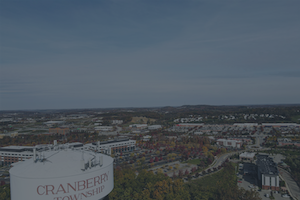How the state budget impasse is costing Butler County schools millions
School officials are painting a bleak picture: Millions of dollars meant for student and school resources have fallen victim to politics and partisan battles over the state budget.
If the impasse were to last through the end of 2025, Butler Area School District projects it will be out $29 million, and every other school district in Butler County is facing a similar situation — missing millions each month since the beginning of the school year.
“It’s almost laughable, (but) you may also want to cry, that the state budget has not passed,” Brian White, Butler Area School District superintendent, said in an earlier interview.
He doesn’t see any help coming soon.
Because of this, his school district, along with others in the region are gearing up to cover the missing money via tax anticipation notes, or loans with interest that won’t be reimbursed by the state.
At a news conference earlier this month, Pennsylvania School Board Association members said schools dipping into limited reserves while taking out loans to cover payroll and basic operations is not sustainable.
“This is a crisis that is directly affecting our ability to serve our students,” Sabrina Backer, president-elect of the association, said at the news conference.
She cited seeing difficult decisions by districts statewide, including hiring freezes, delayed contracts and cuts in nonessential spending, “just to keep our lights on and our classrooms open for our students.”
The students and staff are hurting now and taxpayers will be hurting too if the impasse continues, Backer and others said at the Oct. 14 event, while imploring state lawmakers on both sides of the aisle to come to a resolution.
“This isn’t about politics or process,” Chris Dormer, association president, said. “It’s about Pennsylvania, our children, and the right of those children to receive a fully funded and fairly funded public education.”
Since the Pennsylvania General Assembly missed its June 30 budget deadline for the 2025-26 fiscal year, the Republican-led Senate and the Democratic-led House of Representatives, along with Gov. Josh Shapiro’s office, have failed to come to an agreement over the past 100-plus days.
Various school officials in Butler County have said there is “no end in sight” for the current standoff.
Statewide, the impasse has held up about $3.5 billion in funds, according to the Pennsylvania School Boards Association on Oct. 14. If the impasse goes past the end of October, that total will climb higher.
Several public school districts within Butler County projected at least half their revenue for the 2025-26 academic year would come from state funds.
At Butler Area, the district’s budget projected $56.43 million would come from the state — just over 47% of its roughly $117.74 million plan for the 2025-26 school year.
These funds go toward things such as payroll, bills, building projects, after school programs and behavioral health resources.
Regardless of enrollment size or financial status, most public school districts in Butler County report feeling some pain due to the absence of state funds.
Some schools have expressed concern over future operations, while other administrations are already looking into taking out tax anticipation notes.
At Karns City Area School District, superintendent Eric Ritzert said his district is $2.1 million behind as of Sept. 30. By the end of October, that number will be $4.5 million.
He’s previously told the Butler Eagle that his district would be looking into loans if the impasse appeared likely to stretch into November or December.
Through the end of September, Knoch School District was short about $3.3 million, according to its business manager, Jamie Van Lenten. She also said by the end of October, her district will miss out on an additional $1.6 million.
“After December, that’s when there will start to be real concern if we don’t see any state funding,” Van Lenten said at a school board meeting earlier this month.
David McDeavitt, superintendent of Allegheny-Clarion Valley School District, said his schools should have received roughly $3 million in state funding by this point. A-C Valley, with a $20 million budget for 2025-26, gets about 60% of its funds from the state.
“We are currently reviewing our expenditures versus tax revenues, along with our current fund balance, to see how long we can go without taking out a loan,” McDeavitt said. “We might be able to get another month or so.”
A-C Valley has not furloughed any staff, but the district is only paying “essential bills to keep the district running,” he said.
Paul Cessar, Slippery Rock Area School District’s business manager, told the Butler Eagle his school district has missed out on about $5.7 to $6 million so far.
At an Oct. 13 meeting, the school board authorized Cessar to explore borrowing options “as a means of financing the district’s financial obligations.”
At Moniteau School District, business manager Austin Blauser estimated, based off last year’s budget, his district would be down roughly $2.7 million up to this point.
“We were required by law to have a budget in place by June 30, yet they don’t play by the same rules,” board President Michael Panza previously said. “They’re still getting paid. The bottom line is, who’s getting hurt here? The kids.”
According to data provided by White at Butler Area, in October, Butler anticipated it would receive $9.5 million from the state.
White recently said at a board meeting his district would begin the process of taking out a loan to fill the gap in November.
By some point in January, he said, the district will not have enough cash flow to cover expenses.
“We typically have about $75 million in revenue reported by December of the year. About $2 million of that is from state sources,” White said. “We typically have about $50 million in expenses reported by December of the year.
“This would confirm that by January we will not have enough money coming in to pay for our expenses on cash flow alone.”
Those still waiting to seek loans include Freeport Area and Seneca Valley school districts.
The budget impasse has Freeport awaiting just over $3 million it would have received through the end of September, according to superintendent Ian Magness.
Freeport’s board president, Gary Risch Jr., said at an Oct. 8 meeting his district can probably make it through February thanks to $8 million left in its fund balance.
Seneca Valley is owed a little over $7.6 million due to the impasse, according to its communications director, Ian Hunter. He said the district has not had to borrow due to a strong reserve and long-term financial planning efforts, but will reassess the situation after the start of the new year if the impasse continues.
Mars Area School District declined to comment, but business manager Debbie Brandstetter said in July her school district could rely on savings for several months and that “if it were to drag on, then that would really be an issue.”
Even at the college level, millions are being held up. Butler County Community College is missing roughly $2.46 million in state appropriations up to this point, according to budget summary documents.
As budget negotiations unfold, disputes over overall spending levels and funding for areas like education and transportation, have been debated. Votes held have been mostly along party lines.
Just this past week, when the Republican-led Senate voted 27-23 along party lines to approve a budget of $47.9 billion on Tuesday, a spokesperson for the Democratic-led House was quick to dismiss the plan.
School boards locally and statewide have decried the gridlock, urging both parties to put politics aside and come to an agreement.
“Our schools are open. Teachers are teaching. Buses are running. Meals are being served. Students are learning. We are doing our part,” Chris Dormer, of the school board association, said. “Now we need to partner with our state leaders to help them do their job, come together, finalize a state budget and deliver for our students, our faculty, our educators and our communities, what they've been promised and what they deserve.”
In the face of the budget battles, the schools are still advocating for themselves. Kevin Busher, the school board association’s chief advocacy officer, said funding staying flat for education would be unacceptable, given the loans and fees schools are dealing with right now.
As students, teachers, principals, superintendents and board members wait for those funds, schools in all parts of the state are actively considering cuts to get by.
“Our critical programs are being scaled back or suspended,” Backer said. “After school enrichment, behavioral health partnerships, early childhood education and critical infrastructure investments. In some districts in my region of the commonwealth, my fellow school districts are discussing moratoriums on sports.
“We’re doing everything we can to stretch every dollar, but we need our commonwealth leaders to do their part. Our students and taxpayers deserve better.”









